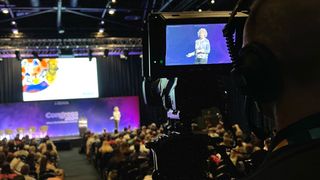One of the key important advantages of Light Emitting Diode video walls is their luminosity. Light Emitting Diode tech produces vibrant and bright pictures that can be readily seen in various lighting conditions. Unlike conventional projectors, which can struggle in brightly lit settings, Light Emitting Diode video screens maintain their clarity and hue precision even in bright rooms. This makes them ideal for outdoor activities or locations with big windows. The elevated luminosity levels ensure that the material displayed is always visible, making it simpler for viewers to engage with the information being shown.
In addition to brightness, Light Emitting Diode video screens provide enhanced visual quality. They offer greater resolution and better hue reproduction compared to traditional projector systems. This means that images and footage displayed on an Light Emitting Diode screen appear sharper and more detailed. The pixel density of Light Emitting Diode displays allows for near viewing without losing sharpness, which is especially crucial in settings like trade shows or meetings where attendees may be nearby to the screen. Furthermore, LED tech can produce deeper dark tones and more vibrant colors, enhancing the overall aesthetic experience.
Versatility is another important benefit of LED video walls. These systems can be configured in various dimensions and forms to fit different areas and design requirements. Unlike traditional projection systems, which require a specific distance from the screen to operate correctly, LED video walls can be installed in a variety of environments. They can be curved, tiled, or even used in creative layouts to create distinct display exhibits. This adaptability allows companies to customize their visual presentations to suit their specific requirements, making Light Emitting Diode display walls a flexible choice for any setting.
Maintenance is also a crucial consideration when comparing LED display screens to traditional projection systems. LED displays generally require less maintenance over time. Traditional projection systems often need bulb replacements and routine maintenance to maintain optimal performance. In contrast, LED technology has a greater lifespan and does not require frequent changes. This reduces inactivity and maintenance costs, making LED video walls a more economical solution in the long future. Companies can concentrate on their displays rather than concerned about the upkeep of their visual systems.

Lastly, power conservation is an important consideration for many organizations. LED video walls consume less power compared to conventional projector technologies, which can lead to significant savings on power costs. This is particularly advantageous for businesses and venues that operate displays for extended periods. Additionally, the lower energy consumption of LED technology contributes to a reduced ecological impact, making it a more Learn More sustainable choice. By choosing LED video walls, organizations can enjoy high-quality visual screens while also being considerate of their power use and environmental footprint.
In conclusion, LED video walls offer many advantages over traditional projection technologies. Their luminosity, visual quality, adaptability, minimal maintenance needs, and energy efficiency make them an excellent option for contemporary display displays. As innovation continues to advance, Light Emitting Diode display walls are likely to grow even more common in multiple environments, providing organizations with the resources they require to efficiently convey and engage with their audiences.